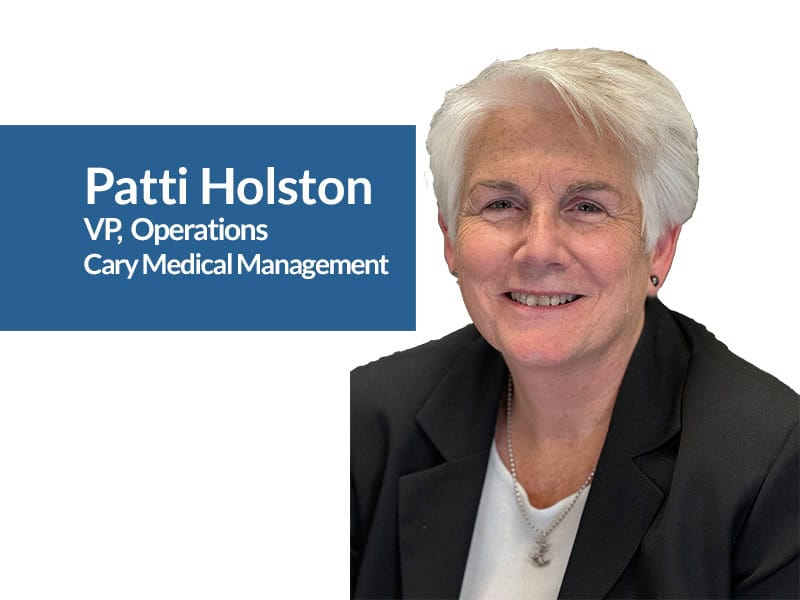The Crucial Role of Health IT in Value-Based Care
Without health IT, there's no viable path to success in value-based care.

As the landscape of American healthcare continues its gradual yet decisive shift towards value-based care (VBC), the role of Health Information Technology (Health IT) becomes increasingly critical. For Accountable Care Organizations (ACOs), Managed Services Organizations (MSOs), Risk-Bearing Entities (RBEs), and payer organizations, the challenge is clear: to leverage Health IT effectively, get the most out of your investment, and ensure you don’t burden your participating providers with excessive operational overhead.
The Health IT Ecosystem in the World of Value-Based Payment
The promise of value-based care lies in its ability to improve patient outcomes while reducing costs. However, achieving these goals demands a robust Health IT infrastructure that supports interoperability, data analytics, and streamlined administrative processes.
Key Health IT Systems
1. Electronic Health Record (EHR)s: EHRs are a critical component in the transition to value-based care because of the need for a central data repository to track and share data, which paper can’t support. Unfortunately, achieving seamless data exchange remains a formidable hurdle. Differing EHR systems and the variability in how they interpret interoperability standards can impede care coordination and data sharing. The ability to share data bidirectionally with any participating practice regardless of EHR is a competitive advantage under value based agreements. It’s no secret that innovation in healthcare requires innovative integration capabilities, particularly when it comes to getting data from other health IT into EHRs.

2. Health Information Exchanges: These entities facilitate the sharing of health information among different organizations and are vital for coordinated care. Successful HIEs ensure that patient data follows the individual through various points of care, enhancing both care continuity and quality. Comprehensive HIEs include behavioral health, dental, post-acute care facilities, long-term care, and home health in addition to hospitals, primary care, and specialists practices.
The greatest challenge with HIE data is that providers either have to leave their EHR to access it or, if it’s available in their EHR, they have to sift through massive amounts of data to find what they need. It’s important for providers to have the most up-to-date and relevant information from the HIE at the time of the patient encounter. To optimize your HIE, make sure you have the ability to deliver only the new data that is relevant to the current encounter within the EHR workflow.
3. Patient Population Health and Analytics Tools: These tools aggregate and analyze data from various sources, helping organizations identify high-risk patients and manage chronic diseases more effectively. They are essential for proactive care management. They can also play a critical role in helping providers risk adjust patients, especially if the data can be provided within the EHR at the point of care. However, implementing population health management (PHM) systems in value-based care (VBC) models comes with several challenges that organizations need to navigate to achieve successful outcomes. Two of the biggest include:
- Integrating data from diverse sources like, EHRs, claims data, social determinants of health, and patient generated data.
- Ensuring the accuracy, completeness, and consistency of data across different sources. Inconsistent or poor-quality data can lead to incorrect insights and decisions.
Many pop health vendors lack the ability to extract the deep clinical data needed from EHRs. When choosing a pop health solution, ensure the company’s interoperability capabilities are able to get both claims and clinical data. Ingesting claims data is significantly easier, whereas getting good clinical data requires deep EHR integration. Most importantly, ensure the system has the ability to go into the EHR and find the data that is needed no matter where and how it’s documented. If you’ve chosen a population health solution, but are struggling with getting hard to reach data, contact us. Smartlink can partner with your vendor and add our value-based integration capabilities as a ‘bolt-on’ to their solution.
4. Care Coordination and Referral Management Software: A referral management platform with the ability to manage referrals within a high value referral network is a ‘must-have’ when it comes to succeeding in value-based contracts. These platforms ensure patients are guided to the highest value providers, streamline the referral process, and ensure appropriate specialist consultations, thereby minimizing delays in patient care. They also enhance provider communication and data sharing, reducing the risk of redundant tests and procedures. This efficiency leads to better resource utilization and lower healthcare costs.
Additionally, having a true referral management system such as Intelligent Care Coordinator (not just the ability to send and receive referrals via an EHR) can track referral patterns and outcomes, enabling organizations to identify high-performing providers and foster partnerships that support value-based care goals. Ultimately, referral management systems help create a more integrated and patient-centered care experience, essential for achieving the quality and cost objectives of value-based care.
5. Telehealth: Telehealth has increased access to care for patients, especially those in rural areas. Also, by enabling virtual consultations, telehealth facilitates ongoing monitoring and management of chronic conditions. It also reduces overhead costs associated with in-person visits, such as facility use and staffing.
6. RPM: Remote Patient Monitoring (RPM) allows continuous monitoring of patients with chronic conditions, such as diabetes, hypertension, or heart disease, enabling real-time data collection and early detection of potential health issues. By actively involving patients in their own care through regular monitoring, RPM increases patient engagement and adherence to treatment plans. RPM also provides healthcare providers with a wealth of data that can be analyzed to tailor interventions to individual patients, improving the precision of care and driving better health outcomes.
7. Digital Health: Digital health systems empower patients by providing them with access to their health information, enabling them to take a more active role in managing their health. Empowered patients are more likely to engage in preventive care and make informed decisions about their treatment options.
Strategies for Enhancing Provider Adoption of Health IT: Streamlining Workflows and Reducing Burden in Clinics
While these Health IT systems form the backbone of a successful value-based care strategy, the real challenge lies in ensuring that they are used to their full potential. Simply having the right technology is not enough—it’s about how well your participating providers adopt these systems.
For health IT investments to ‘stick’, healthcare executives administering value-based contracts face the critical challenge of understanding the demands the systems and data requirements place on the staff in their participating clinics. Providers are often overwhelmed by the complexity of managing value-based contracting requirements while simultaneously delivering care to their patients. These systems and requirements can introduce additional administrative burdens, such as tracking quality metrics, ensuring compliance with reporting requirements, and managing patient data across multiple platforms. This dual pressure can lead to burnout and frustration among physicians and their staff. To mitigate these challenges and avoid overwhelming clinics, executives must implement strategies that streamline workflows and promote better provider adoption of health IT systems. By addressing these concerns, healthcare organizations can foster a more efficient and supportive environment for providers, enabling them to focus on delivering high-quality patient care.
Below are strategies for enhancing provider adoption:
- Involve Clinicians in Decision-Making: Engage physicians and staff in the selection and design of health IT systems to ensure that tools meet their needs.
- Demonstrate How Technology Can Help Rather Than Hurt:
- Streamline Workflows: Identify and automate repetitive administrative tasks such as appointment scheduling, patient reminders, and billing processes.
- Clinical Documentation: Implement voice recognition or templates to streamline clinical documentation, reducing time spent on paperwork.
- Data Entry Automation: Use tools that automatically populate data from previous visits or external sources to reduce manual entry.
- Provide On-going Training: Provide ongoing training tailored to different user levels, ensuring staff feel confident using the systems. In addition, establish mentorship or buddy systems where experienced users support their colleagues in adapting to new technologies.
- Implement Feedback Mechanisms: Create channels for staff to share their experiences, challenges, and suggestions regarding health IT systems. Use the feedback to make continuous improvements to workflows and systems, ensuring they remain relevant and user-friendly.
- Focus on Integration: Ensure that health IT systems can integrate seamlessly with existing systems to prevent data silos and streamline workflows. If providers do need to leave one system for another, implement Single Sign On (SSO) solutions to reduce the number of logins and streamline access to various systems.
- Engage and Communicate: Clearly communicate the benefits of the systems for both providers and patients to foster buy-in. Be prepared to validate that change is hard. Staff will vary in their degree of change tolerance. Identify and empower “champions” within the organization who can advocate for health IT adoption and assist their peers.
- Monitor and Evaluate: Develop metrics to assess the impact of health IT on workflows and identify areas for improvement. Be sure to share success stories and positive outcomes to reinforce the value of health IT.
Looking Forward: The Future of Health IT in Value-Based Care
The successful integration of Health IT into VBC strategies holds the potential to revolutionize healthcare delivery. By prioritizing interoperability, investing in robust data analytics, and focusing on reducing administrative burdens, healthcare organizations can enhance patient outcomes and achieve financial sustainability.
For ACOs, MSOs, RBEs, and payer organizations, the path forward involves not just implementing Health IT, but also fostering a culture of continuous improvement and innovation. Provider involvement in the process is critical so as to foster system adoption and avoid increasing administrative burdens.
Naveen Vangipurapu, VP Software Development
Table of Contents



